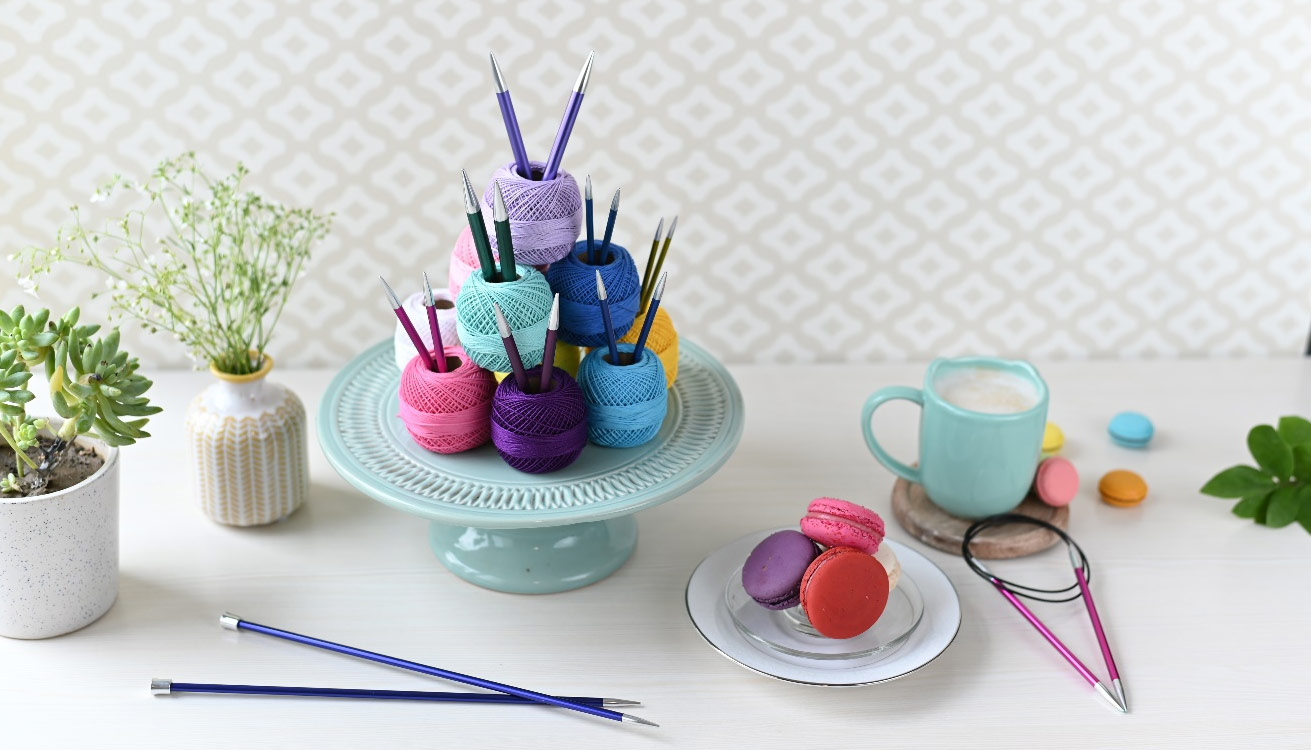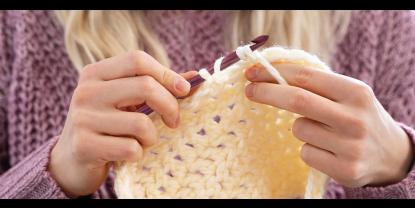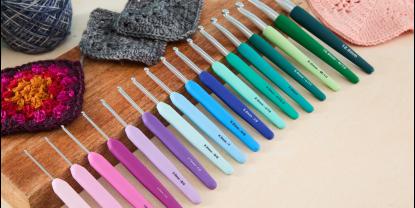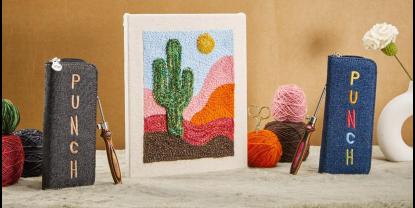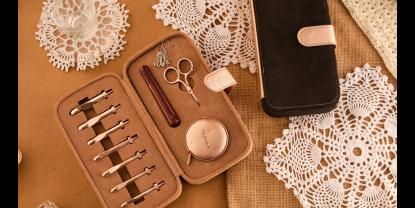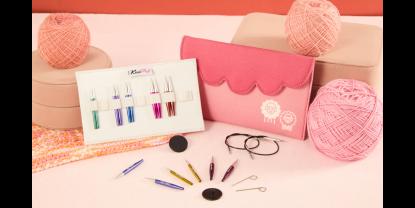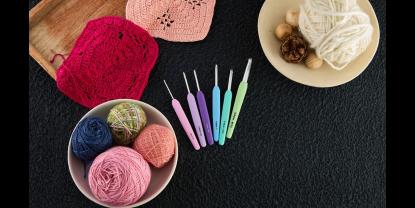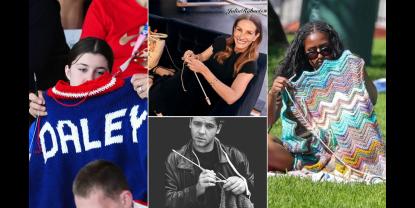Knitting needles are more than tools for the craft, they are a medium to express creativity, successfully complete a project and enjoy crafting with. Whether you are just starting out or have a number of projects under your belt, understanding knitting needles is half the work done. Why so? The right knitting needles can make or break your knitting experience. With so many types, sizes, materials, and styles available, choosing the perfect needles for your project can feel overwhelming. The best knitting needles for a scarf are quite different from the ones that are best for knitting socks. The key is to understand what to use and when. In this blog, we’ll walk you through everything you need to know about knitting needles.
Why Choosing the Right Knitting Needle Matters
The perfect knitting needles aren't just tools, they're extensions of your creativity. Knitters know that the right knitting needles are ones match the specific requirements of yarn and pattern. Say, for example, working with wool yarn versus working with silk. Also, it is similar to making a choice to knit a sweater with single-pointed needles or circulars, given on how you want to construct the project. The knitting needles also determine stitch consistency and tension. The tools you knit with are important to reduce hand fatigue and enhance your overall knitting experience.
Types of Knitting Needles
Different knitting projects require specific needle types. The two determining factors are the needle size (diameter), which is mentioned in metric sizes and equivalent US standard sizes.
1. Single-Pointed) Knitting Needles
The most popular and easiest knitting needles for beginners to master, single pointed needles feature a straight shaft with one pointed end and a knob at the other. While the pointy tip works with yarn for making stitches, the knob prevents stitches from slipping off
Available in standard sizes in varying lengths of 25cm (10"), 30cm (12'') and 33cm (13'').
Best for: Flat projects like scarves, dishcloths, and sweaters constructed in pieces.
2. Circular Knitting Needles
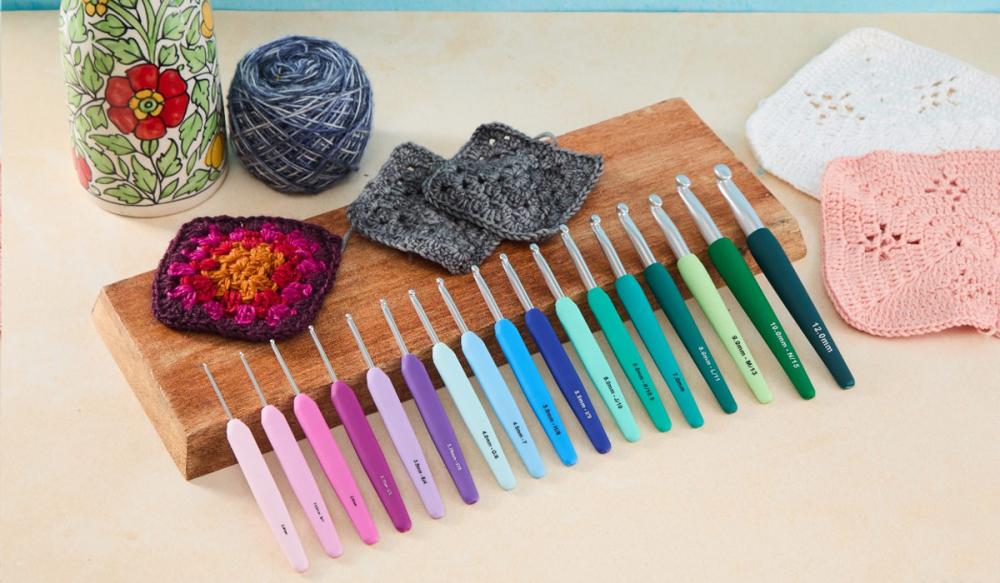
Versatile tools for knitting, introduced over a century circular knitting needles have brough a revolution. The two needle tips connected by a flexible cable. They are available in two varieties: Fixed circulars (one-piece construction) and Interchangeable circulars (tips can be swapped with different cables). The ergonomic design distributes project weight onto the cable, reducing wrist strain. Our ultimate guide to circular knitting needles can guide you better.
Available in standard sizes in varying lengths. The needle tips are generally 10 cm (4”) or 13 cm (5”), however the cables can make them in lengths from 25cm(10") to 150 cm (60”). The interchangeable needles have the added advantage of further lengths with cable connectors.
Best for: Both flat knitting (blankets and scarves) and working in the round, sweaters, shawls, hats and more.
3. Double-Pointed Knitting Needles (DPNs)
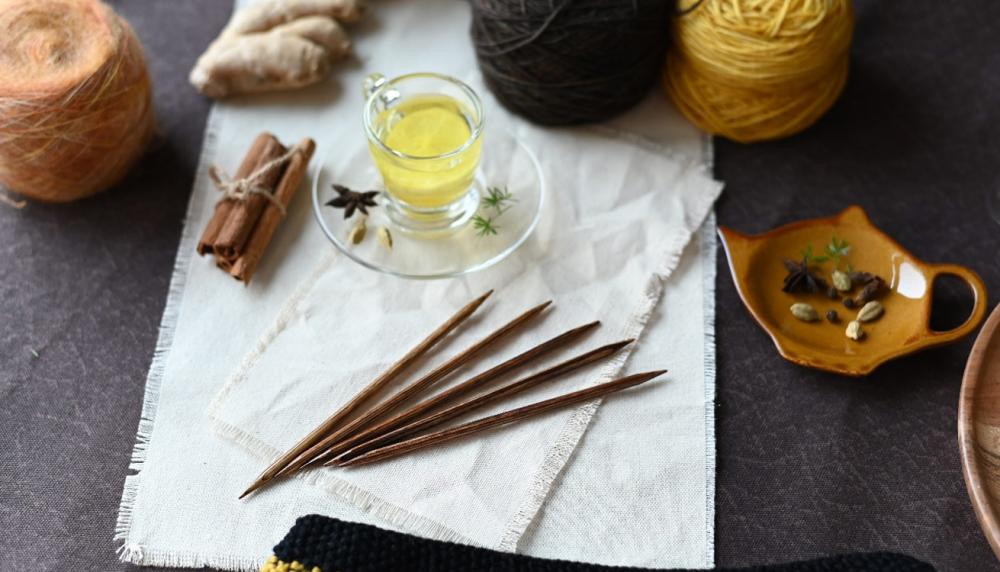
Needles with points at both ends typically sold in sets of five, this is ideal for seamless circular knitting especially smaller circumferences. Refer to our previous blog on how to knit in the round with double pointed needles.
Best for: Small circular projects like socks, gloves, sleeves, and baby items
4. Mini Knitting Needles
A trending new range, mini knitting needles at 5cm (2”) are designed for a specific purpose. Sometimes in projects such as socks, sleeves, hats, baby garments and tricky necklines, double pointed needles and the magic loop technique both fall short and here’s when these knitting needles work the magic. Learn more with our blog on discovering the charm of mini knitting needles.
Cable Needles
Typically not used for knitting a project rather cable knitting patterns, this needle is a crafting acceesory for the intricate patterns.
Wool Needles
This accessory also deserve a mention among needles that every knitter must own. It’s used in various ways of weaving in yarn ends, Swiss darning and duplicate stitches.
Cubic Knitting Needles

Though not typically in the category of knitting needle types, cubic knitting needles also known as square needles, deserve a mention. Unlike the traditional round diameters, the cubic/ square surface is a great option for makers suffering from hand fatigue and medical conditions such as arthritis and carpal tunnel syndrome. To explore more, explore our blog on why use square knitting needles.
Comparing Knitting Needle Materials
|
Material |
Feel |
Best For |
Ideal Yarn Types |
|
Wood/Bamboo |
Warm, grippy, lightweight |
Beginners learning tension control |
Slippery yarns (silk, alpaca) |
|
Metal/ Aluminum/ Stainless Steel |
Smooth, fast, cool to touch |
Experienced knitters, quick projects |
Cotton, wool blends |
|
Arcylic |
Lightweight, slightly flexible |
Budget-friendly option |
Bulky yarns, beginners |
|
Carbon Fiber |
Lightweight with balanced glide |
All-purpose knitting |
All yarn types |
Complete Knitting Needle Size Guide
The size of your knitting needle determines what yarn works best with it and affects your stitch size. However, you can always experiment. While certain needle/yarn combinations are standard, experimenting with different pairings can create interesting textures. For instance, using fingering yarn on larger needles creates airy, lacy fabrics.
|
Needle Size |
US Size |
Best Yarn Match |
Project Examples |
|
2mm - 2.75mm |
0-2 |
Fingering/sock yarn |
Delicate lace, socks |
|
3mm - 4.5mm |
3-7 |
DK/light worsted yarn |
Baby items, lightweight garments |
|
5mm - 6.5mm |
8-10.5 |
Worsted/aran weight |
Sweaters, accessories |
|
6.5mm - 10mm |
10.5-15 |
Bulky/chunky yarn |
Quick scarves, hats, blankets |
Project-Specific Needle Recommendations
While this is subjective and upto the knitter’s prefence, here’s a standard set:
Project Type |
Recommended Needles |
Why It Works |
|
Scarves & Blankets |
Straight or Circular (for flat knitting) |
Easily manages long rows of stitches |
|
Sweaters |
Circular (body) + DPNs or small circulars (sleeves) |
Creates seamless construction |
|
Socks & Gloves |
DPNs or small circular needles |
Enables precise small-diameter knitting |
|
Hats |
Circular needles, switching to DPNs for decreases |
Perfect for crown shaping |
|
Shawls |
Circular needles |
Accommodates increasing stitch counts |
|
Travel Projects |
Interchangeable sets |
Compact and adaptable |
How to Choose Your Perfect Knitting Needles
There's no single "best" needle for everyone—your ideal choice depends on:
- Project type - Flat vs. circular construction. Read our blog on flat vs circular knitting- what are the pros and cons.
- Comfort level - What feels best in your hands
- Pattern requirements - Follow gauge and needle recommendations
- Your knitting style - Tight knitters may need larger needles
Remember, with the right knitting needles, you'll be creating beautiful projects with confidence and joy!


